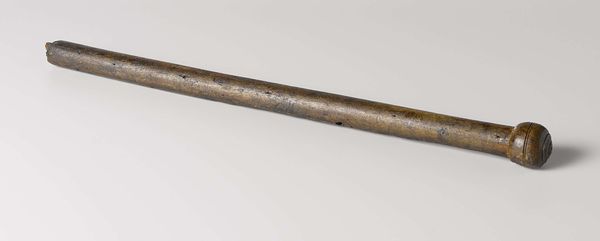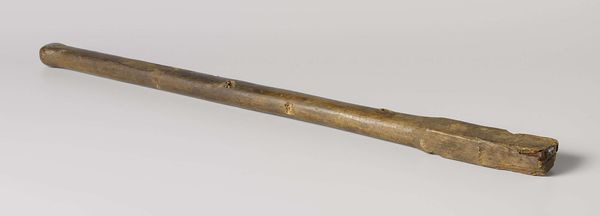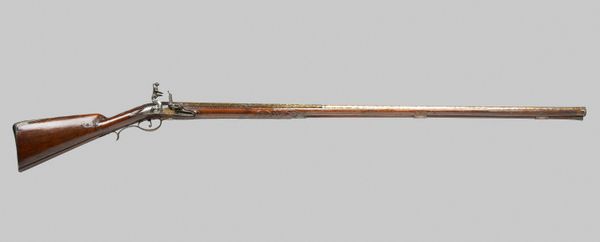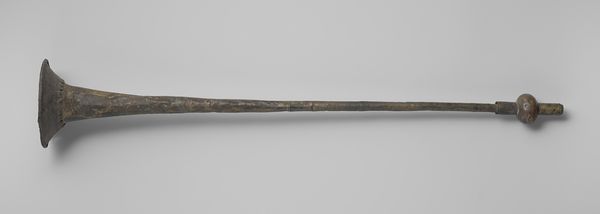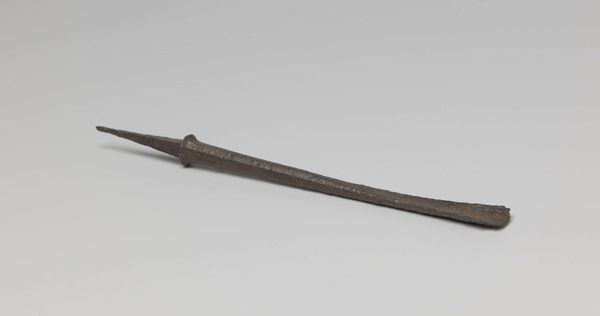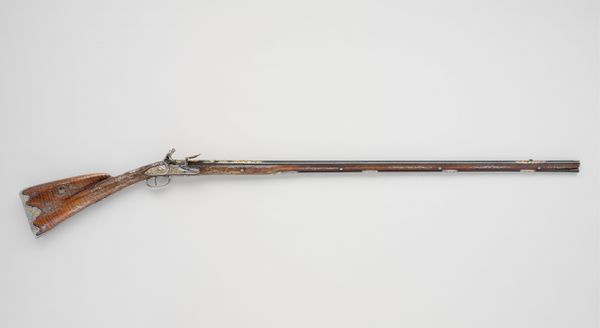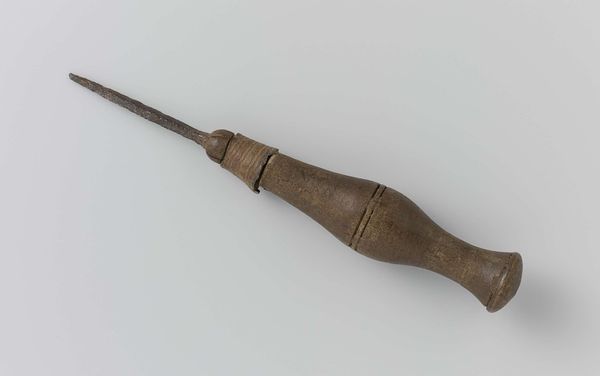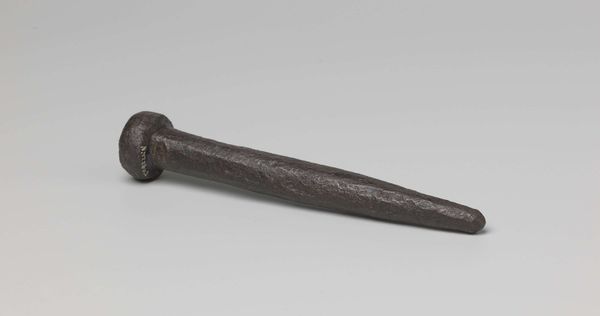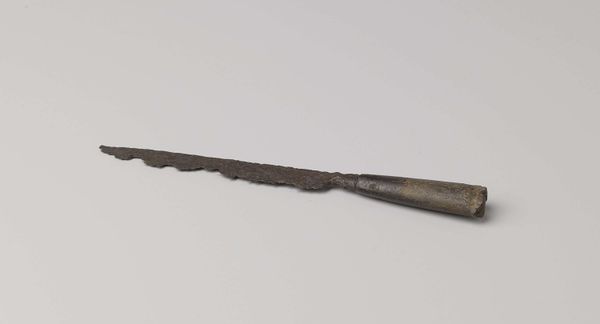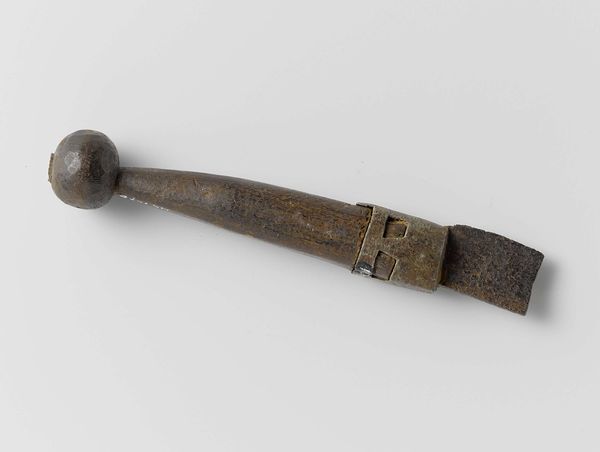
Binnenste deel van patroonmal bestaande uit rechthoekig blokje en stok c. 1590 - 1596
0:00
0:00
anonymous
Rijksmuseum
sculpture, wood
#
geometric
#
sculpture
#
wood
Dimensions: length 21.7 cm, length 2.6 cm, width 1.8 cm, diameter 1.3 cm
Copyright: Rijks Museum: Open Domain
Curator: We are looking at "Inner part of a pattern block consisting of rectangular block and stick", crafted around 1590-1596. It's held here at the Rijksmuseum. Editor: My first thought is that it's unassuming—almost austere. A cylindrical segment meets a cubic one in muted tones. It gives the impression of humble craftsmanship, like it could be the support structure to something grander. Curator: Indeed. Its function is intrinsic to understanding its form. The sculpture, made of wood, is essentially a template, likely used in textile production, allowing for the consistent reproduction of designs. Observe how the rough, hewn texture suggests a subtractive method, the material carefully taken away to reveal a pattern's base structure. Editor: Ah, I see. So the "stick" would be used to stamp onto a surface, perhaps fabric. That links it to wider conversations around labour and trade—who was involved in creating and disseminating these patterns? How might it connect with gendered labour of textile production in the Netherlands, and where were the finished products distributed, and who consumed them? Curator: Precisely. One can imagine artisans meticulously carving, applying principles of geometry, adhering to tradition whilst also striving for ingenuity. This resonates, further, on ideas of reproducibility and standardization influencing early modern aesthetics. Editor: Let’s not forget the wood itself, right? From what tree does it derive? How did the choice of this medium influence both the production process and final form? What impact has trade in these raw materials and finished goods had on forest resources? The story here expands into one of colonial impact if we consider the networks connected. Curator: You offer salient points about resource management and networks. This work can still affect how one contemplates early production technologies. It is fascinating, still, that basic shapes formed these templates and influenced, maybe in silent ways, fashion and décor for ages. Editor: Yes, this unremarkable form bears quiet testament to the interconnected, sometimes turbulent, pathways of cultural production and exchange. By linking it to larger histories, we recognize how the seemingly small acts of labor intertwine with broader stories of human impact.
Comments
No comments
Be the first to comment and join the conversation on the ultimate creative platform.
